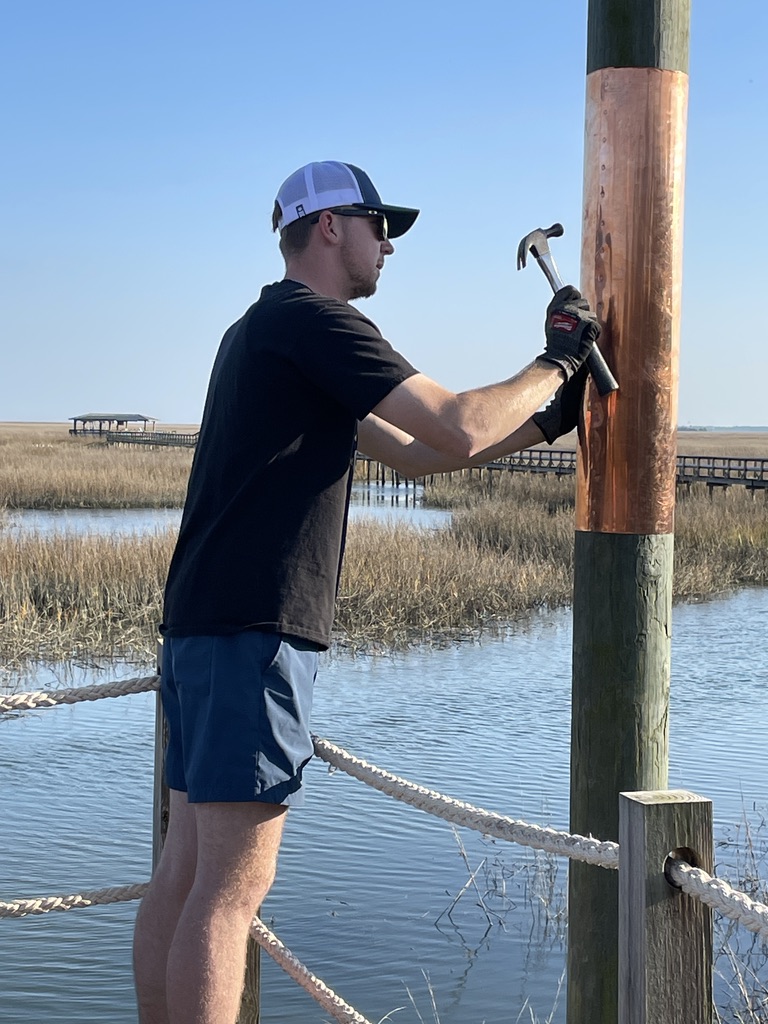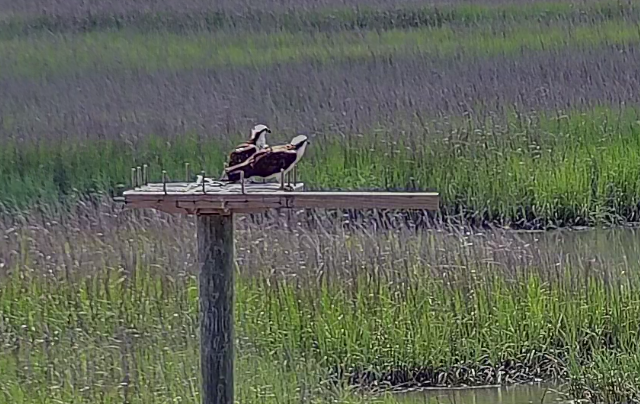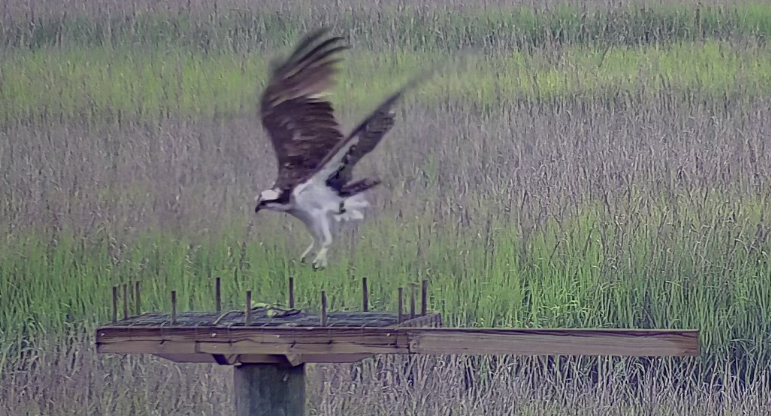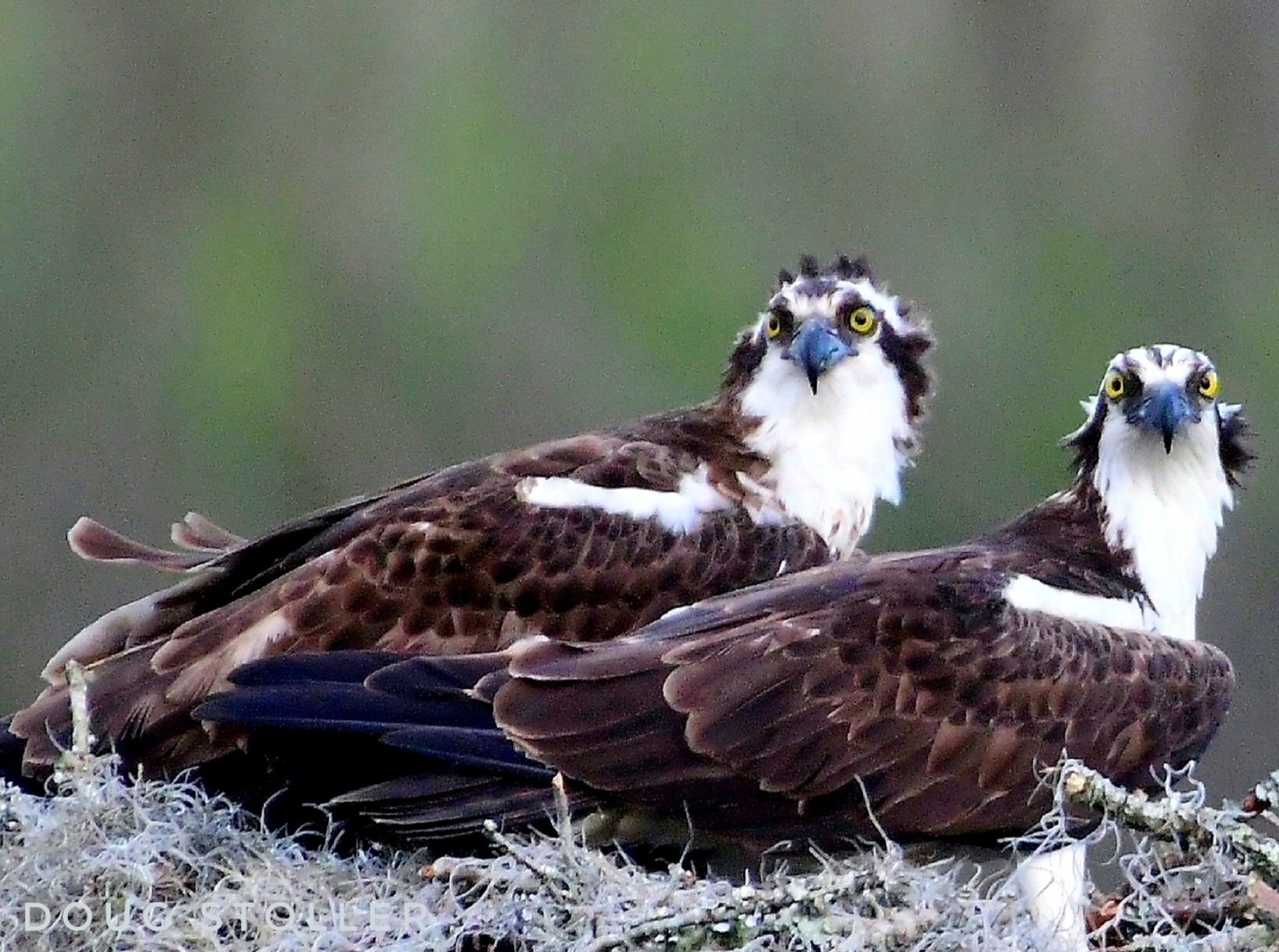Sunrise over the saltwater marsh and Tybee Island Light Station from Wilmington Island on 2025_04_19. Sunrise is at 06:50 EDT. If you can't wait for the sun to sit right on top of the lighthouse, fast forward to 3:19 into the video for a spectacular image. (6:19).
Sadly the pair have abandoned their nest as of May 28, 2023. The cause may be shown in these two videos in which a hawk was sighted frightening the female to depart the nest. If you stop the video at 48 seconds (14:49:36) you'll see the hawk.
Here's a second video showing the same behavior on the part of the osprey/hawk. Look for the hawk flying through (blurry) about 1:40 (06:12:42) into the video. The osprey returns, then the hawk returns about 2:18 into the video (06:13:18).
Night video of nest with IR illumination. Osprey's eyes are not sensitive to the near IR illumination so their pupils remain dilated. Because of this, and like a cats' eyes, they appear very bright relative to the rest of the image. The female's head only is usually visible so you will see none, one, or two bright eyes in this video. Change from BW to pseudo-color red is a function of the camera which is set to automatic mode. Duration 4:35.
This video shows the transition from night IR to visual and is best viewed full screen because it is initially so dark. You will see the camera "hunting" for the right setting of IR or visual mode. The female is visible on the nest. Duration: 7:14.
Usually in the morning and evening the male brings one or more fish to the female. He bring it to the nest, she takes it, and flies to the perch to the right of the nest while the male stands on the periphery of the nest. Duration 15:33.
Here's the lunch meal. Duration 16:44.
Here's the late lunch meal. Duration 32:28.
Here's the evening meal. Note the inflowing higher tide. Feeding seems to be related to time of day rather than tidal activity. Duration 7:00/25:17.
A quick video tour of the marsh from the nest, to Little Tybee Island, scanning to the left and pausing at the Tybee Island Lighthouse before returning to a small scale view of the nest, thence to the Atlantic Ocean and back to zoom to the nest. Duration 1:16.
2023_06_12: Redtail hawk landing on the porch overlooking the marsh. Duration 0:16.

2025_02_12: Aiden adding copper sheet to osprey platform support pole to make it difficult for racoons to climb up to the nest.

2021_06_12: After 2 years of the platform being in place, the first pair of ospreys show up and take an interest.

2021_06_14: Osprey landing on the platform.

2022_05_02: The nesting, ©Doug Stoller, used by permission.